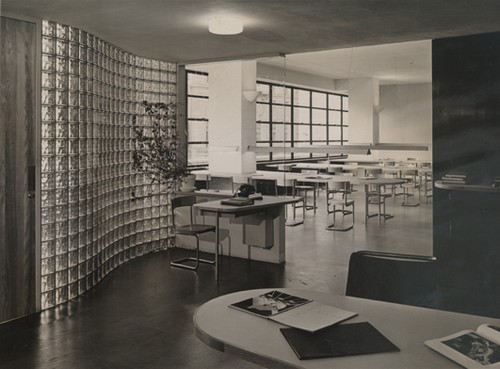How to Make a Modern Art Library
Selections from the Éluard-Dausse Collection
08 Apr - 22 Jun 2009
Mezzanine, The Lewis B. and Dorothy Cullman Education and Research Building
On the eve of director Alfred H. Barr's pioneering 1936 exhibition Fantastic Art, Dada, Surrealism, The Museum of Modern Art announced the arrival in its library of two extraordinary collections of Surrealist literature: those of Paul Éluard, the French poet and central figure of the Surrealist movement, and Camille Dausse, a Parisian doctor and friend to many poets and artists from the group. Comprising almost seven hundred books, magazines, pamphlets, and other ephemera, the acquisition provided the new department with its formative collection, significantly increasing its holdings in a diversity of forms and genres—from livres d'artistes and automatic drawings to gallery invitations and press clippings—and satisfying the Library Committee's self-imposed directive to document contemporary art in nontraditional ways. By actively pursuing primary sources and some of the more fugitive traces of contemporary artistic practice, the committee developed an approach to modern art resources that has remained the blueprint for developing research collections to this day. On view together for the first time are some of the rare items from this invaluable collection of Surrealist literature.
Organized by Sheelagh Bevan, Assistant Librarian, The Museum of Modern Art Library.
On the eve of director Alfred H. Barr's pioneering 1936 exhibition Fantastic Art, Dada, Surrealism, The Museum of Modern Art announced the arrival in its library of two extraordinary collections of Surrealist literature: those of Paul Éluard, the French poet and central figure of the Surrealist movement, and Camille Dausse, a Parisian doctor and friend to many poets and artists from the group. Comprising almost seven hundred books, magazines, pamphlets, and other ephemera, the acquisition provided the new department with its formative collection, significantly increasing its holdings in a diversity of forms and genres—from livres d'artistes and automatic drawings to gallery invitations and press clippings—and satisfying the Library Committee's self-imposed directive to document contemporary art in nontraditional ways. By actively pursuing primary sources and some of the more fugitive traces of contemporary artistic practice, the committee developed an approach to modern art resources that has remained the blueprint for developing research collections to this day. On view together for the first time are some of the rare items from this invaluable collection of Surrealist literature.
Organized by Sheelagh Bevan, Assistant Librarian, The Museum of Modern Art Library.

